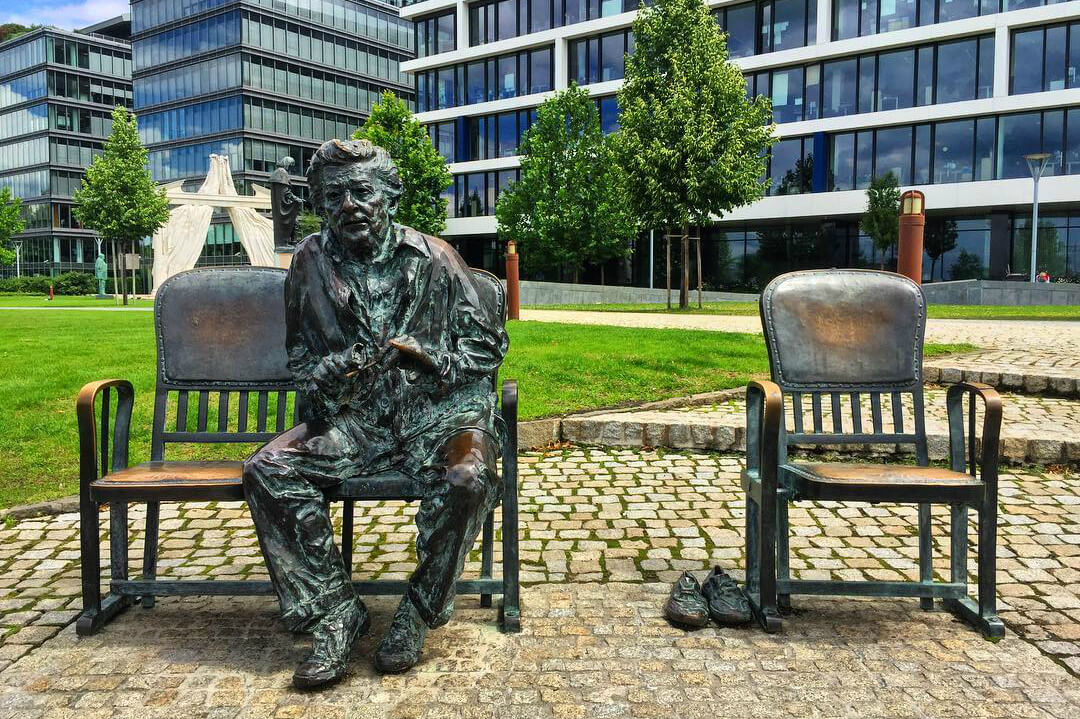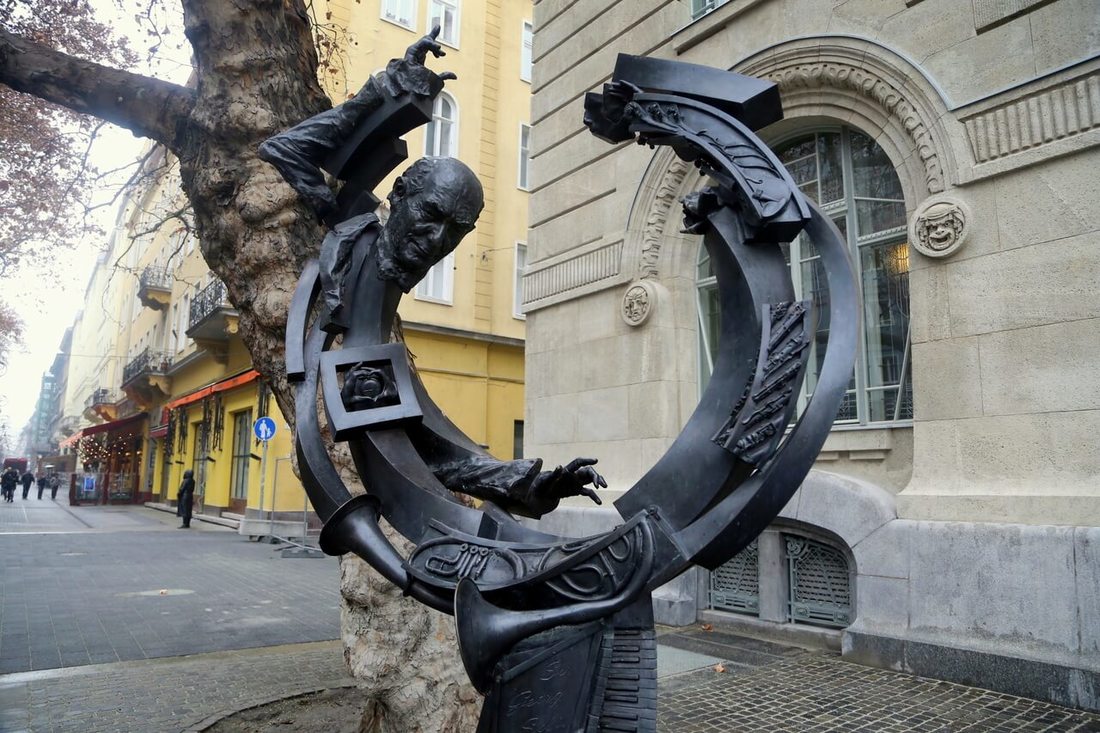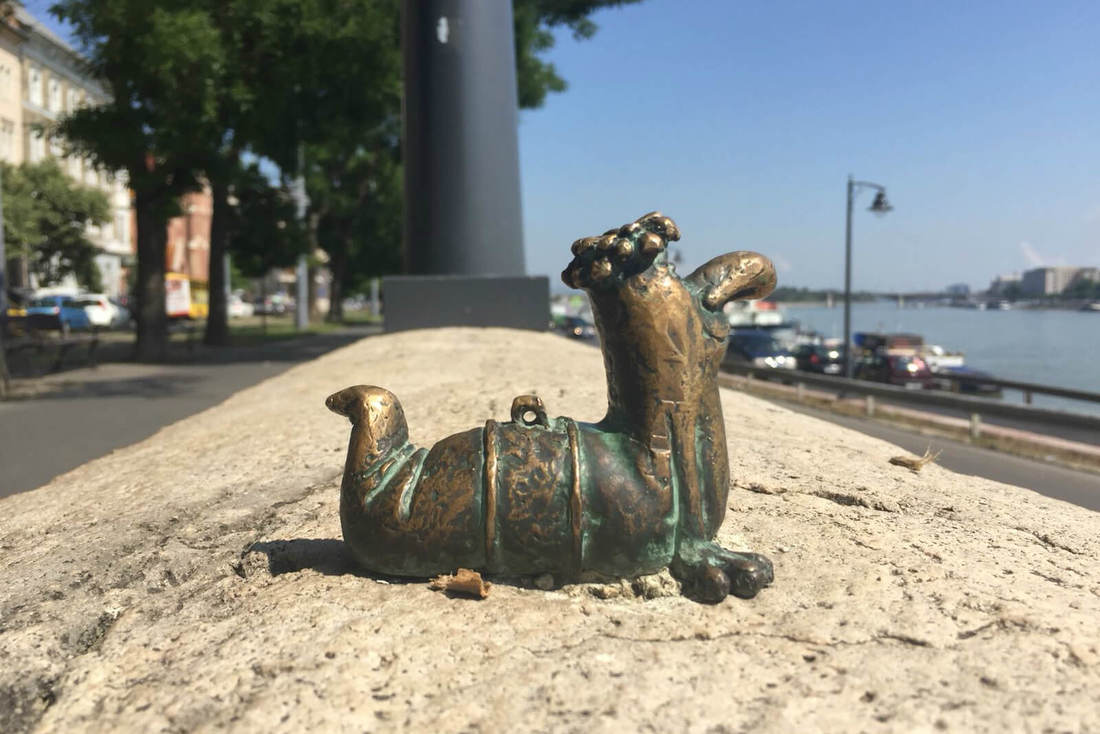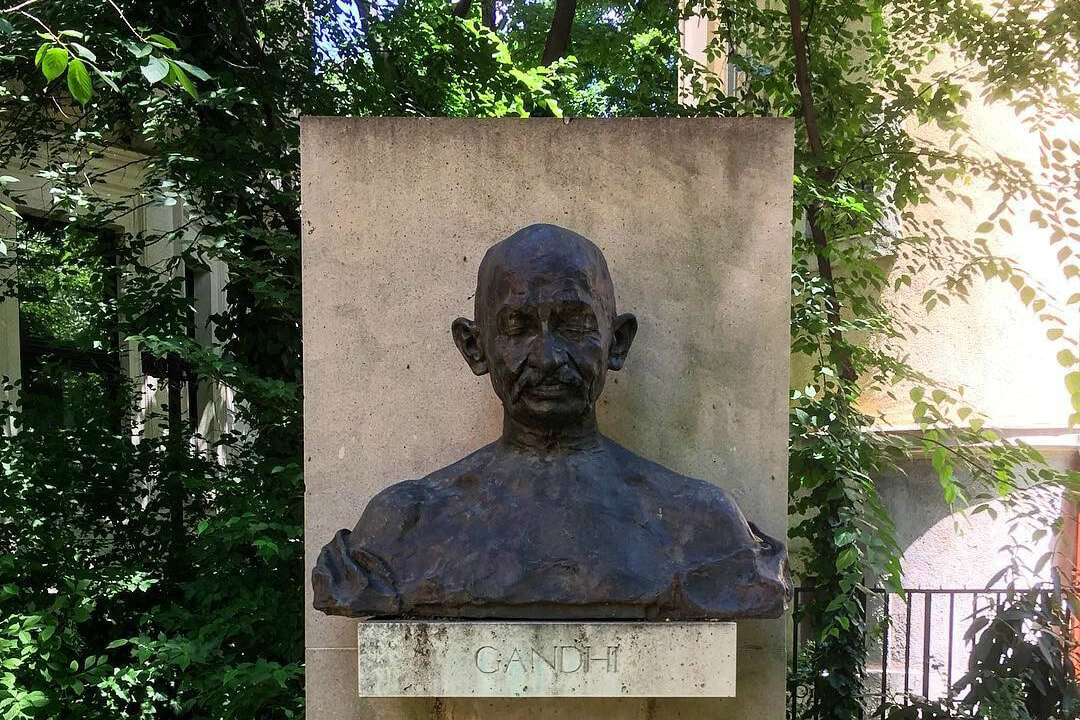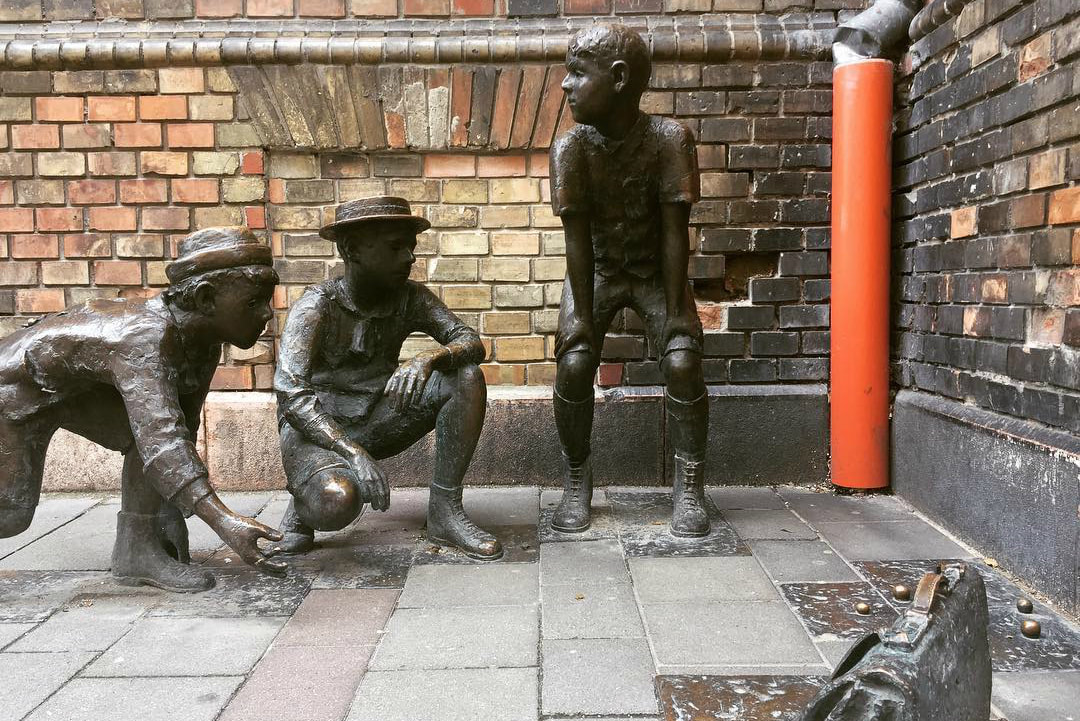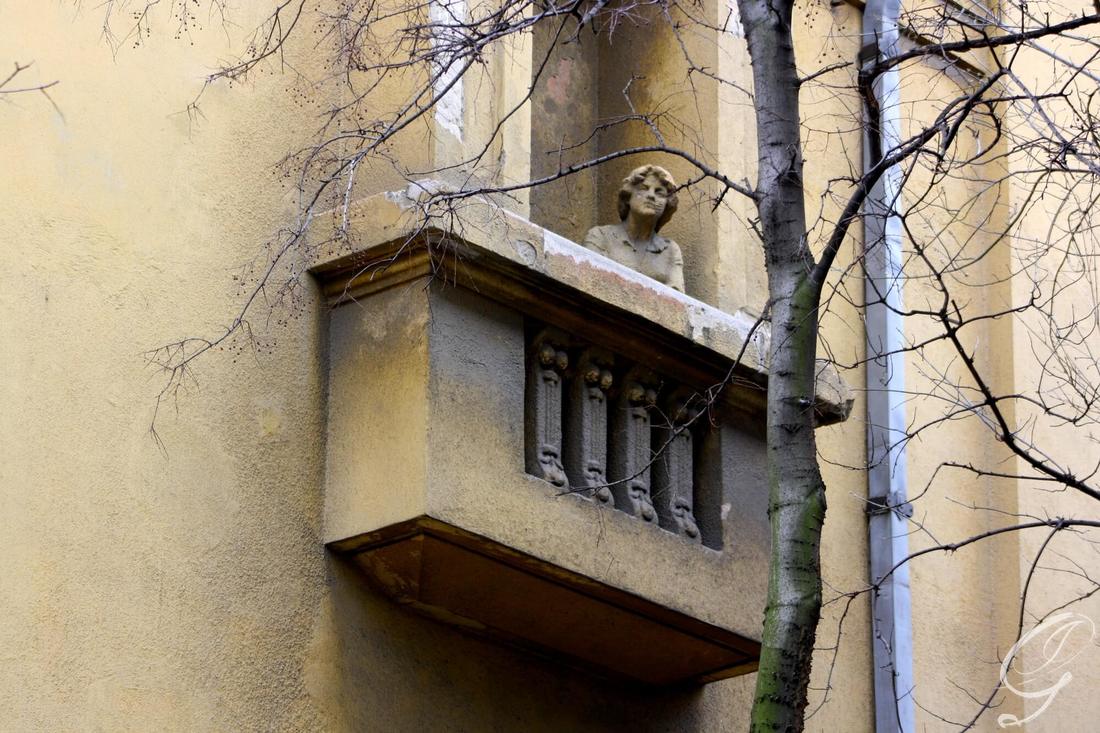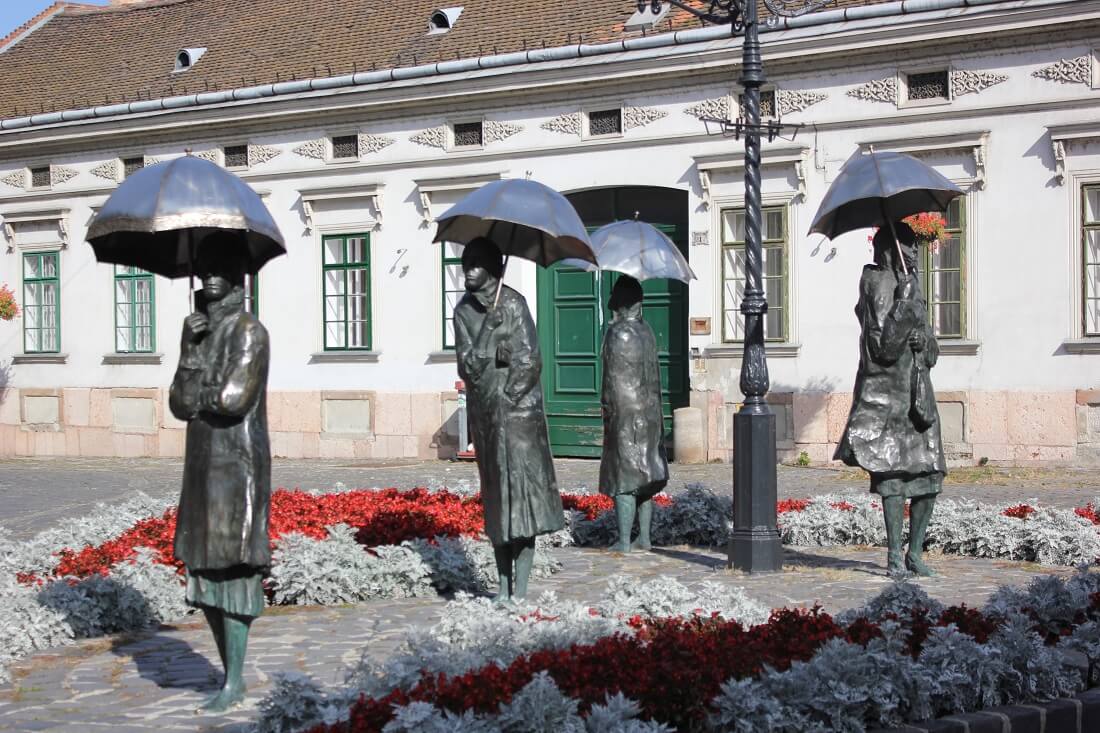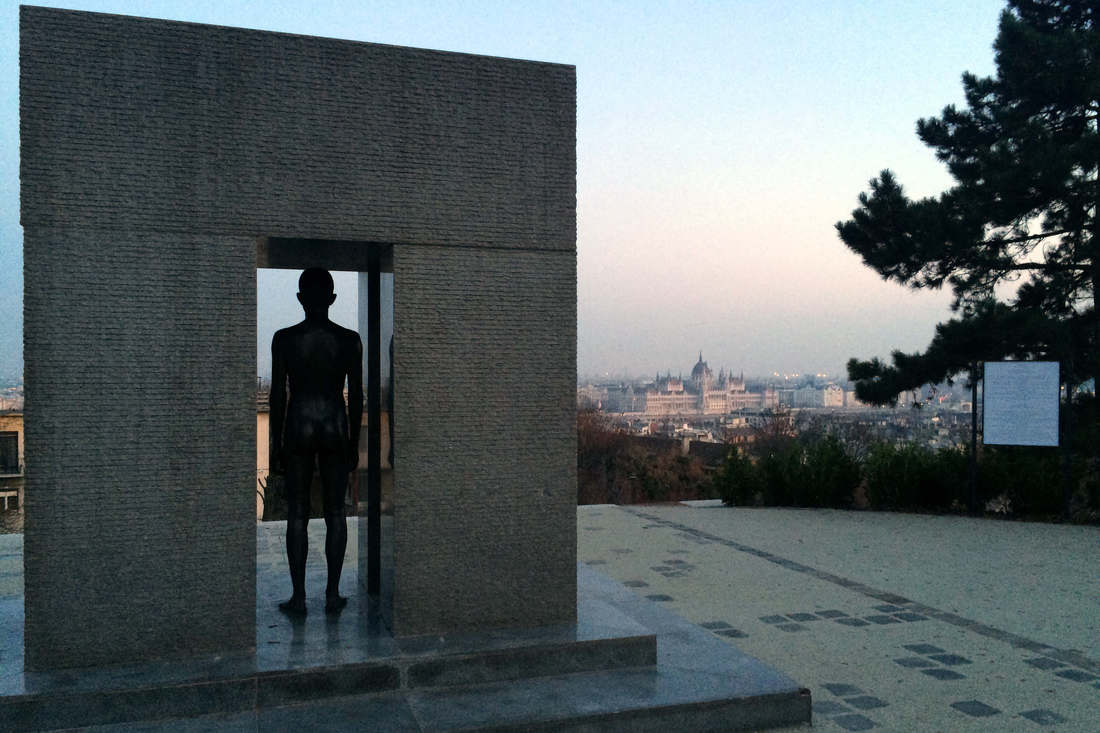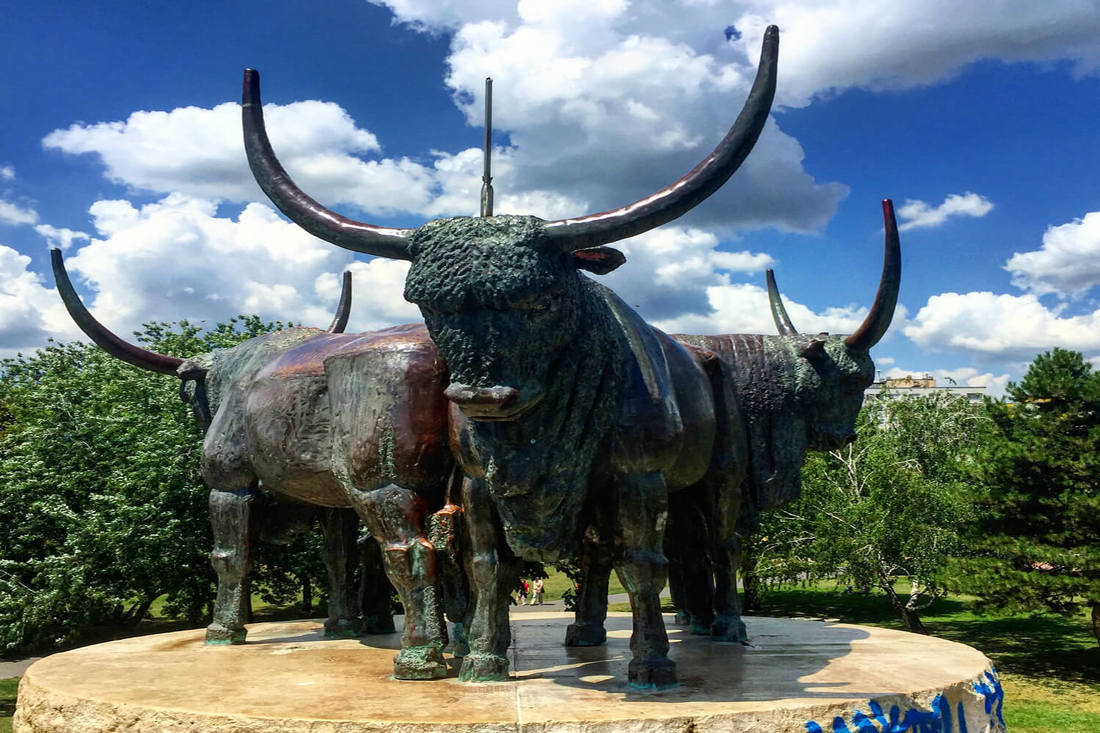|
7/8/2018
Budapest's Secret StatuesHidden Sculptures Around Town You don’t have to look hard to see statues in the Hungary’s capital: from Heroes Square to Gellert Hill, giant figures stare down at you across the city. But sometimes the most interesting sculptures are concealed in the shadows or away from the tourist traps. Daniel Cochran from @statuesofbudapest seeks out some of Budapest’s hidden gems. Outside the National Theatre: The Star of the Show This is Hilda Gobbi, a famous Hungarian actress and all-round trailblazer. Gobbi worked for the Resistance during Nazi rule in Hungary and lived as an out-and-proud lesbian in a time when homosexuality was illegal in Hungary. Basically, she was a badass. The shoes sitting next to her were placed to represent her former poverty - Gobbi was once homeless and during her early years of struggle, Gizi Bajor (a Hungarian actress and mentor) once gave her a pair when she had none. The National Theatre is a treasure trove for statue-hunters, but this one may just be the most fascinating. By the Liszt Academy: A Swirl of Song If you want to see a statue that sums up a man, Péter Párkányi Raab’s amazing sculpture of conductor Georg Solti is the one to beat. A ring of bronze displays the cacophony and symphony of an orchestra, all controlled by the flailing hands of the master. Having Jewish heritage, Solti fled Hungary before World War II to escape persecution. He forged a successful career, working as Music Director in London, Chicago and Paris. This unique creation, standing just in front of the Liszt Academy, was designed to celebrate the 100th anniversary of his birth. By the Danube: The Chief Worm Mini-statues are everywhere in Budapest; from the discarded items in Széll Kálmán Square to a sneaky Kermit the Frog (yup, really) in Liberty Square. A large percentage of them are the work of Mihajlo Kolodko, an artist who seems intent on making the whole city into a glorious treasure hunt. This worm comes from a popular Hungarian cartoon “The Great Ho-Ho-Ho Horgász” and can often be found wrapped up in little knitted scarves and hats in the winter, proving that Hungarians really care about their statues. In City Park: Shadow of the Vampire Béla Lugosi was the archetypal Dracula: stylish, seductive and menacing, and it’s only fitting that his face adorns the neo-gothic Vajdahunyad Castle in Varosliget. This bust of the prince of darkness himself is secreted around the back wall of the castle glowering down on the resolute travelers who seek him out. In fact, Lugosi shouldn’t be here at all. German artist Hartmut Zech “gifted” the statue to the city by installing it on a vacant plinth under cover of night. A fitting way for the count to establish himself in his new home. Although legend has it that a vampire can only come when invited, Lugosi continues to occupy the castle walls, waiting for you to hunt him down. On Andrássy út: A Garden of Peace Even on the grand avenue of Andrássy there is tranquility, or just behind it anyway. Tucked away in the garden of the Ferenc Hopp Museum of Asiatic Arts is a collection of interesting sculptures for you to wend your way around in silent contemplation. The great Mahatma himself is there, not in pride of place, but with his eyes closed in a quiet corner. Calming, almost meditative. The garden’s usually free to enter, so whenever the city gets a bit much you can pop in for a little peace of mind. Garden On Práter utca: The Paul Street Boys Based on a popular Hungarian children’s book, the Paul Street Boys (or Pál utcai fiúk) are a gang of street kids who are forced to defend their neighborhood against the rival Redshirts. You can even see a couple of the older boys lurking near our heroes as they play marbles against a wall, ready to steal the winnings. Péter Szanyi’s sculpture stands, appropriately, outside a school on the corner of Prater and Kisfaludi in the VIII district and is a pretty awesome photo opportunity. It’s well worth dipping out of the main street crowds to snap a selfie next to some of Hungary’s most beloved street urchins. On Thököly út: The Marble Bride Probably the best-hidden statue in the city, you won’t see this one unless you know where to look. But if you’re willing to take a trip east of Városliget and gaze up to a balcony between two buildings on Thököly út, you might just catch a glimpse of the tragic Marble Bride. There are a lot of legends about this one, but the best known one is this: a couple lived in the apartment until the husband, an artist, was called to war. As he left his wife waved goodbye to him from their balcony. After a few months word came back of his death in battle, and his devastated wife died of a broken heart. However, the man was not dead but captured, and eventually returned home to find the news of his beloved. Grief-stricken, he created this statue of her and set it up on the balcony where he last saw her face, then walled it off never to be used again. In Óbuda: Waiting in the Rain Up in the Third District, in Fő tér, these forlorn looking women stand in shelter from the rain. Sculptor Imre Varga saw a group of prostitutes on a Paris street corner, and decided to capture these “unlucky girls…waiting in the darkness”. There are four women: one French, one British, a German and a Hungarian. Originally rejected by a Budapest gallery owner who exclaimed that “Hungary doesn’t make memorials for whores”, Varga’s piece found a home in this Óbuda square, where it is euphemistically referred to as Esernyős (umbrella) by locals. In Péter Mansfeld Park: Between Stone Péter Mansfeld was an icon of the Hungarian Revolution. At just 17 he and four other teenagers stole weapons and ammunition that the Soviet police had stashed around the city and dismantled their propaganda icons. Soon, the net started to close around the boys and, in fear, one of them confessed to his parents, who promptly turned them in to the authorities. Mansfeld tried escape by jumping from a high ledge, breaking his hand in the fall. It was in vain: he was captured the next day. Tried, tortured and hanged at the age of just 18. Mansfeld’s legacy lives on in Hungary, and there are at least two statues of him in the city. This classical nude depicts him as the eternal youth trapped in the rigid brutality of the Communist regime. In Bikás Park: Raging Bulls
Three bulls stand back to back on the top of a small hill in Buda, staring out to the limits of the city. Notice the spike coming up from the middle bull’s head? It used to hold the sun, just as the other two bulls held the moon and stars. Sadly, these adornments are long-gone, but István Kiss’ monument to the interconnectedness of the celestial and terrestrial remains. Legend has it that the hill under this statue only exists due to a truck that got stuck in the mud. Rather than haul it out, the construction company decided instead to bury it. Perhaps it’s still underneath… |
CategoriesAll Bars Baths And Pools Beach Bars Best Areas To Stay Bridges Budapest Info Cemetery District 8 Escape Games Fall Festivals Food Historical Sights Hungarian Inventions Indoor Activities Movies And Music Videos Museums Outdoor Activities Outdoor Bars Photo Locations Rainy Day Restaurants Rooftop Bars Ruin Bars Statues Street Art Urban Legends Valentine's Day AuthorB Side Tours |
